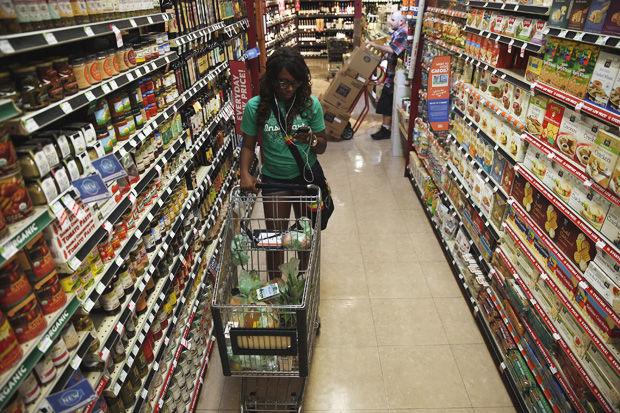Doling out the dollars: Taxpayers shouldn’t be funding poor diets
Instacart shopper Kara Pete looks over a list of groceries as she walks the aisles of Whole Foods for customer Tricia Carr on Sept. 12, 2014 in Sherman Oaks, Calif.
April 14, 2015
When giving to a charity, the donors generally want to know where their money is going, to make sure funds are properly distributed. Taxpayers, who ultimately fund the Supplemental Nutritional Assistance Program (SNAP), have some right to know how that money is being spent.
In the end, a surprisingly large chunk of it is spent buying what amounts to junk food. The National Institute of Health estimates that between $1.7 and $2.1 million of SNAP funds are spent on soda and other sugary beverages.
Humans everywhere are driven by desire. No matter how tight a budget, people will still spend on luxury and comfort items, especially candy and soda.
However, the food stamp program was created so people would have access to staple foods. It is meant to purchase ingredients for meals rather than sweet nothings that will leave one’s stomach feeling empty.
By limiting what people can get with food stamps, we can encourage better nutrition. This is critical among lower-income citizens who typically don’t eat as healthy as those in higher income brackets.
This hurts Americans in the long run, in the form of health care costs. According to the Centers for Disease Control and Prevention, nearly 35 percent of Americans are neatly in the obese category, partially due to preventable factors such as diet. It is estimated to cost $147 billion per year, some of which will be paid for by state programs such as Medicare and Medicaid.
In a food culture that encourages poor eating habits, the poor will continue to spend on unhealthy food. While healthy eating generally costs more than an unhealthy diet, according to a study by the Harvard School of Public Health, the difference isn’t quite so large, only about $1.50 per day.
This adds up to about $550 per year. By contrast, the obese pay about $1,429 more than those of an average weight in medical costs per year. Cutting certain foods from the SNAP program would force people to buy healthier, more nutritional foods and reduce these costs.
There is nothing inherently wrong with treating yourself. However, luxuries should be treated as such, and should not be funded by the state.





















